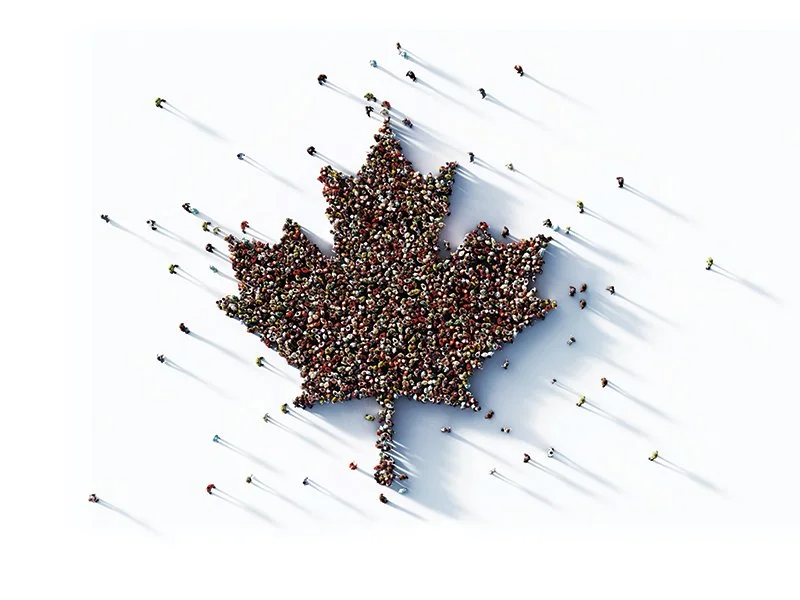Donor support vital as charities face new challenges and demands
For Canadians who can give, even a small contribution can have a profound, collective impact
microstockhub via getty images
With around one in five charities noting an increased demand for services in both 2023 and 2024, the sector is facing a dual challenge of stretching their already strained resources to meet growing needs, according to a report by the Charity Insight Canada Project at Carleton University in Ottawa.
While the inflation rate is falling, it remains a significant challenge for charities, particularly in key operational areas like salaries, insurance, supply/inventory and utilities.
But the fiscal strain does not end with operational expenses, the report notes. Provision costs are also on the rise, paralleled by a growing demand for services.
Leaders in the sector say many charities are struggling to keep pace, facing a dual pinch from a pullback in corporate and foundation giving and a long-standing absence from federal government policy consultation.
They are calling on Canadians to sustain their generosity – no matter the size of the gift – and are simultaneously advocating for a permanent seat at the government decision-making table to ensure the sector’s vital role is recognized and supported.
“The giving doesn’t stop when times get tough,” notes Neil McEachern, a director on the Association of Fundraising Professionals (AFP) Canada Foundation board. He cites the COVID-19 pandemic as proof of Canadians’ generosity but warns that current corporate giving is not keeping pace with the need.
“I was at a meeting maybe a month ago (with a corporate donor) and they basically told us that they’ve slashed their budget right in half,” says Mr. McEachern.
This scaling back is compounded by a ‘reprioritization’ of corporate funds, partially influenced by shifts in investment in diversity, equity and inclusion south of the border, which has had an impact on Canadian causes.
Foundations are also feeling the squeeze, facing a surge in requests while grappling with statutory dispersal quotas and volatile investment markets.
For Canadians who have the means to give, even a small contribution can have a profound, collective impact. This is particularly true for unrestricted gifts, which offer charities the operational flexibility needed to respond to constantly evolving, urgent demands.
“When someone donates to a charity, especially when they make an unrestricted gift, they are really allowing the charity to best respond to the changing demand,” says Mr. McEachern.
These gifts are crucial for alleviating the pressure on the core operations, staffing and resourcing, the non-glamorous but essential costs of running a charitable organization.
Rea Ganesh, chair of the AFP Canada board, emphasizes that the size of a donation doesn’t negate the impact, particularly when it comes to regular contributions.
“Monthly donors are probably my favourite donors of all,” she says, highlighting that even gifts of $5 or $10 given every month that come from a charity’s most loyal supporters have a profound impact on charities because they can count on those funds coming in.
The immediate, tangible impact of donor generosity underscores the importance of continued giving.
Mr. McEachern shares an example from his time with Variety, the children’s charity, in British Columbia, where donor funds provided access to private autism assessments for children in northern B.C., where wait times through the public system stretched to four years – three years longer than in Vancouver.
“Because of donors, we were able to help youth and children in Prince George and northern British Columbia get access to private autism assessments,” he says.
“It’s surprising that government doesn’t seem to appreciate how large our contribution is to the GDP and employment. And yet in comparison, other sectors have voices, and we don’t. ”
He also notes the impact of donor funds on community safety and outreach through the Vancouver Police Foundation, where donations funded programs to help vulnerable individuals in the downtown east side replace lost identity documents and brought kids together for mentorship opportunities like playing floor hockey.
Ms. Ganesh points to the diverse motivations behind giving, noting that donors are often driven by personal experience, such as being a grateful patient at a hospital or a desire to address systemic inequities.
She says many donors support causes outside their immediate area, such as the Love, Scarborough campaign, because they strongly believe that every person in Canada deserves proper health care.
A key challenge the charitable sector continues to face is its lack of formal representation within the federal government, a significant oversight according to AFP given the sector’s massive economic footprint.
“We generate $200-billion plus annually in GDP, but we don’t have any representation,” Mr. McEachern points out.
AFP has been actively campaigning for the creation of a Charitable Sector Secretariat to give the sector a permanent voice,” says Ms. Ganesh. ”Progress is slow, and policy is often created in a vacuum, leading to detrimental effects.
“It’s surprising that government doesn’t seem to appreciate how large our contribution is to the GDP and employment. And yet in comparison, other sectors have voices, and we don’t,” says Ms. Ganesh.
Learn more: afpglobal.org/afp-canada
To view this report on The Globe's website, visit globeandmail.com
To view the full report as it appeared in The Globe's print edition National Philanthropy Day


